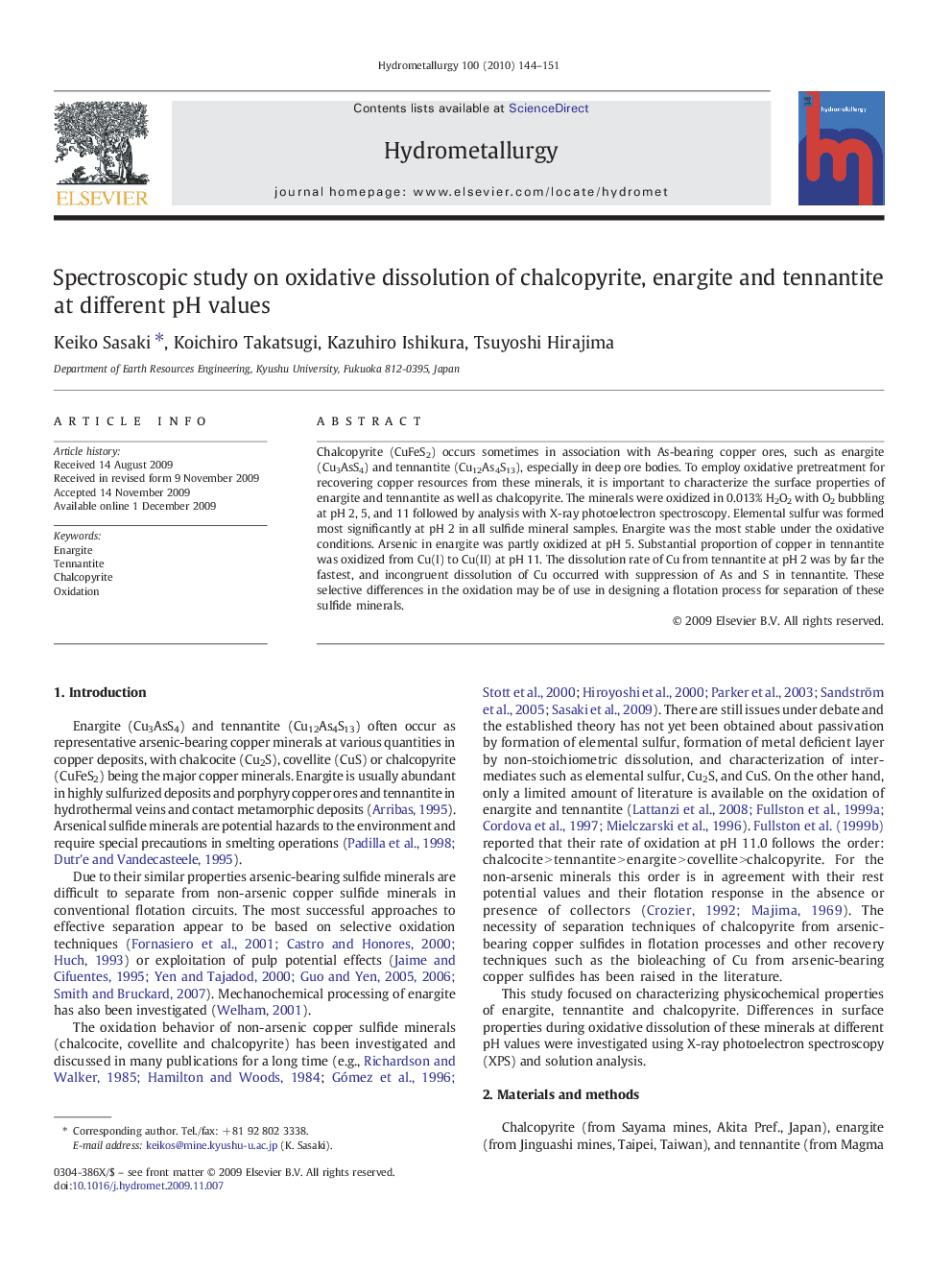| Article ID | Journal | Published Year | Pages | File Type |
|---|---|---|---|---|
| 212878 | Hydrometallurgy | 2010 | 8 Pages |
Chalcopyrite (CuFeS2) occurs sometimes in association with As-bearing copper ores, such as enargite (Cu3AsS4) and tennantite (Cu12As4S13), especially in deep ore bodies. To employ oxidative pretreatment for recovering copper resources from these minerals, it is important to characterize the surface properties of enargite and tennantite as well as chalcopyrite. The minerals were oxidized in 0.013% H2O2 with O2 bubbling at pH 2, 5, and 11 followed by analysis with X-ray photoelectron spectroscopy. Elemental sulfur was formed most significantly at pH 2 in all sulfide mineral samples. Enargite was the most stable under the oxidative conditions. Arsenic in enargite was partly oxidized at pH 5. Substantial proportion of copper in tennantite was oxidized from Cu(I) to Cu(II) at pH 11. The dissolution rate of Cu from tennantite at pH 2 was by far the fastest, and incongruent dissolution of Cu occurred with suppression of As and S in tennantite. These selective differences in the oxidation may be of use in designing a flotation process for separation of these sulfide minerals.
